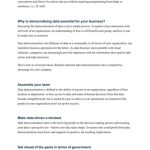Best Practices for Organizing Large Workspaces

Break Down the Space

Dividing the workspace into smaller, manageable areas can make it seem less overwhelming. Designate specific zones for different tasks, such as collaboration, individual work, and storage.

Establish Clear Paths
Ensure there is ample room for movement and avoid creating bottlenecks. Maintain clear walkways and access points to equipment, supplies, and facilities.
Utilize Height and Depth
Maximize space by using vertical storage solutions and shelves to store items off the floor. Consider hanging organizers or using stackable containers to optimize vertical space.
Automate Workflow
Implement automation tools to streamline tasks and reduce clutter. Utilize software for project management, communication, and document organization.
Minimize Paper
Transition to a paperless workflow whenever possible. Digitize documents, use cloud storage, and encourage virtual collaboration.
Consolidate Supplies
Centralize commonly used supplies and equipment in easily accessible areas to reduce time spent searching.
Regular Maintenance
Establish a regular cleaning and decluttering schedule to maintain order and efficiency. Remove unused items, reorganize cluttered areas, and replenish supplies as needed.
Promote Ergonomics
Consider the well-being of employees by incorporating ergonomic elements such as adjustable desks, comfortable chairs, and proper lighting to minimize discomfort and promote productivity.
Seek Input from Team
Encourage team members to participate in the organization process. Gather their suggestions and feedback to create a workspace that meets their needs and preferences.











